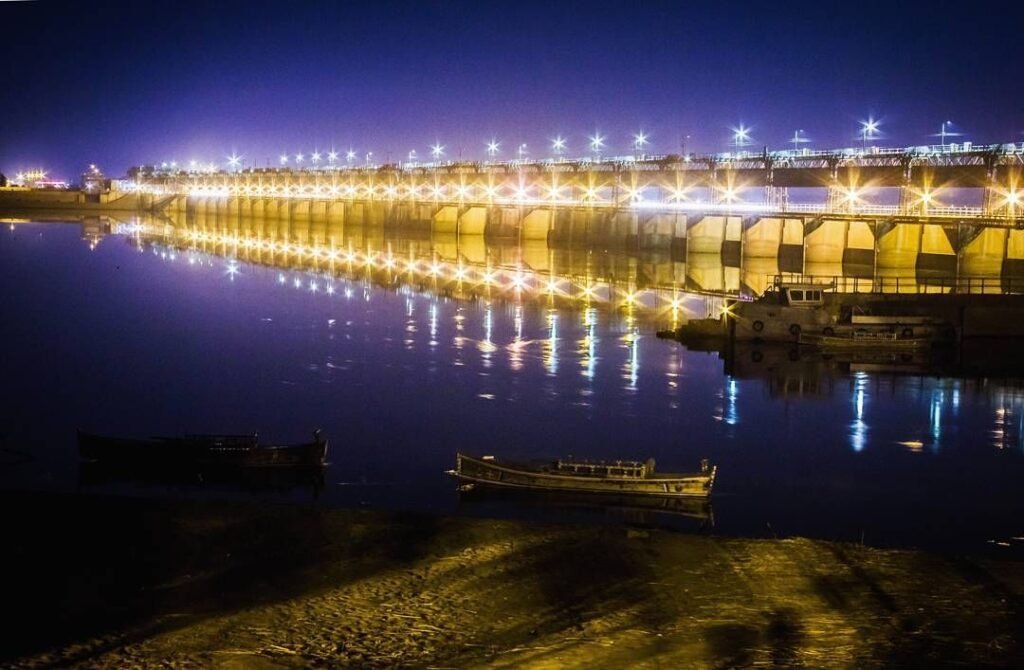According to the Federal Flood Commission (FFC), the River Indus at Kotri Barrage was experiencing a ‘high flood category’ and a ‘low flood category’ at the Guddu-Sukkur Reach.
According to the daily FFC report on Wednesday, the Indus River System’s other major rivers (Jhelum, Chenab, Ravi, and Sutlej) were flowing normally.
Kotri Barrage
The current high-level flooding in the Indus River at Kotri Barrage was expected to continue.
Since August 28, 2022, Tarbela Reservoir has been kept at its maximum conservation level (1,550 feet).
Mangla Dam’s current water level was 1,190.50 feet, compared to its maximum construction level of 1,242 feet.
Kotri Barrage in the night.
Also known as the Ghulam Muhammad Barrage, is a barrage on the Indus River between Jamshoro and Hyderabad in Sindh Pakistan. It was completed in 1955, used to control water flow in the Indus for irrigation and flood control purposes. pic.twitter.com/iUGEZbHlKz— Emmanuel Guddu (@emnpk) November 8, 2021
Floods Havoc Across Pakistan
Heavy downpours have resulted in a havoc flood situation across Sindh and Balochistan province of Pakistan.
According to Provincial Disaster Management Authority, more than 1.6 million people have been impacted by the devastating flood. Locals have considered it to be for the first time that heavy rain has impacted their lives by displacing their homes.
Generally speaking, some of the traditional reasons behind floods in Pakistan include the rise in sea level.
As rising sea level is due to the melting down of glaciers worldwide owing to climate change. Another reason is the rising temperature of the ocean. It ultimately causes heavy rainfalls and cyclones.
A research study has examined that the rise in sea level alongside coastal Sindh has resulted in seawater intrusion towards the land.
Intruding sea levels pose some unprecedented challenges to the areas where usually economic activities are centered. Does the question arise that what causes sea intrusion? Sea intrusion occur usually due to thermal expansion, ocean currents, and monsoons.
As warming of seawater causes the topmost layers of the ocean to release heat toward the atmosphere. However, the layers below naturally retain the heat which causes the rise in the temperature of seawater.
It would be not wrong to say that Climate change has a direct impact on the changing patterns of monsoon rains. The way the country has been witnessing the rising sea level, and frequent rains falls alongside devastating floods, all show how Pakistan is vulnerable to climate change.
Apart from the traditional reasons behind floods, some other aspects are also responsible for urban flooding upon which the infrastructural challenges stand above all. Due to poor infrastructure and lack of solid waste management all such factors lead to flooding in different areas across the country.
The situation of flood has portrayed a bleak picture of the fact that the region of Balochistan as well as Sindh is highly neglected in terms of infrastructural development. The marginalization of areas ultimately gives birth to such havoc and paves the way for nature to have massive destruction.
Pakistan being the most vulnerable state in terms of climate change needs to address this concern for protecting the state from devastating floods in the upcoming future.
